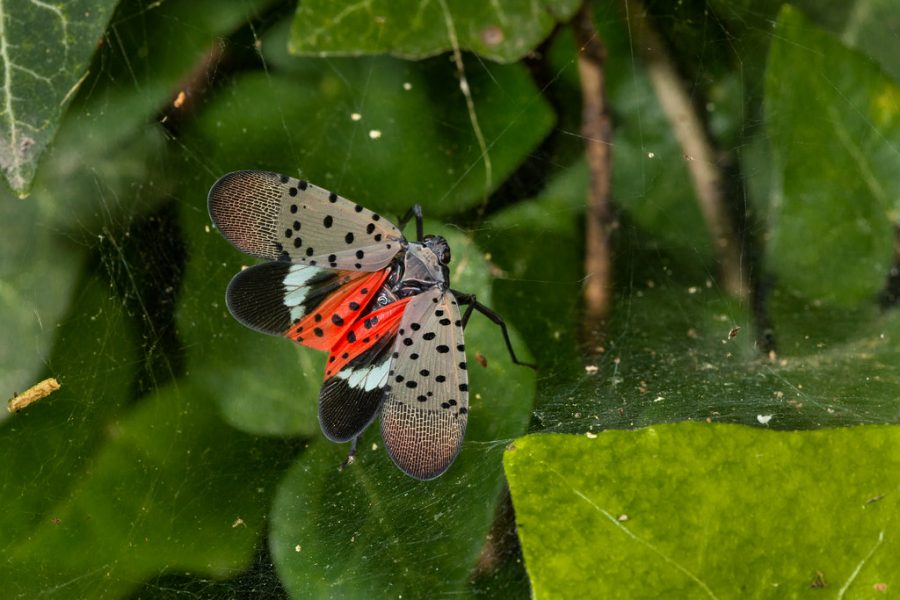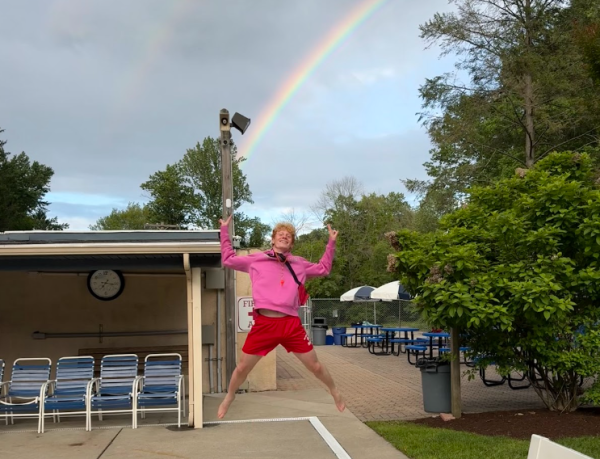The Invasion of Spotted Lanternflies: What Pennsylvanians Should Know
SLF-Spotted Lanternfly (Lycorma delicatula) adult winged, in Pennsylvania, on July 20, 2018. USDA-ARS Photo by Stephen Ausmus.
Concerns about reducing the invasive Spotted Lanternfly populations in Pennsylvania have led to concerted efforts by officials and residents alike to remove these harmful pests from our backyards.
The Spotted Lanternfly, also known as Ailanthus Altissima, is an insect native to China, Vietnam, and India that is characterized by a moth-like appearance with black spots and bright red coloring under its wings. This bug was first seen in Berks County in 2014 by an unsuspecting state forester, though the extent of the Spotted Lanternfly population has grown exponentially since. In the last five years, reports of the Spotted Lanternfly have confirmed that their population now stretches across 14 surrounding counties – including Delaware county – which have been deemed the “quarantine area”.
Haverford High School has not been immune to problems related to the Spotted Lanternfly. Senior June Park claims that she has recently seen them on the tennis courts behind the school.
“It was surreal to see something I learned about in APES actually in front of me, and my teammates yelled at me to smash the lanternfly,” Park adds. “For some reason I thought that Havertown would be immune to these bugs, but they’re here and they’re terrifying.”
But, why is the dissemination of the Spotted Lanternfly making people so uneasy? Though it is not harmful to humans or pets, it negatively impacts the health of native trees, which it uses to lay masses of eggs. In addition, the Spotted Lanternfly wreaks havoc on grape plants, leaving some local vineyards with up to 90 percent yield destroyed over the past year alone. With no natural predators to reduce the population, the lanternflies have the ability to decimate these crops in upcoming years and jeopardize businesses. If not controlled, the insect may abound throughout the rest of the state and into surrounding ones like New Jersey and Delaware.
With this in mind, the Pennsylvania Department of Agriculture and the USDA have partnered up to actively monitor the Spotted Lanternfly’s behavior and fund research for its management and removal. In July 2019, Pennsylvania Governor Tom Wolf signed into law the PA Farm Bill, which allocates $3 million annually to assist officials in containing environmental threats such as the Spotted Lanternfly and other invasive species. In addition, Penn State University researchers are working on management methods for the Spotted Lanternfly that include a variety of biopesticides and a chemical “lure” made of plant pheromones that can act as bait to trap the lanternflies in the wild.
A press conference held at Love Park on Thursday, September 27 by the PA Department of Agriculture sought to educate the public about the Spotted Lanternfly and how individuals in the quarantine area can stop it from spreading. Fred Strathmeyer, the Deputy Secretary of the PDA and advocate for Spotted Lanternfly management, recommends checking cars before leaving the quarantine area to ensure none of the insects are involuntarily transported, and destroying egg masses found on trees, benches, and buildings.
“We need every Pennsylvanian to be vigilant and stand together in this fight,” Strathmeyer stated at the conference. “If Spotted Lanternflies are found in your yard or home, we encourage you to destroy them.”
For more information on the Spotted Lanternfly invasion, visit the PDA website https://www.agriculture.pa.gov/Plants_Land_Water/PlantIndustry/Entomology/spotted_lanternfly/Pages/default.aspx.












